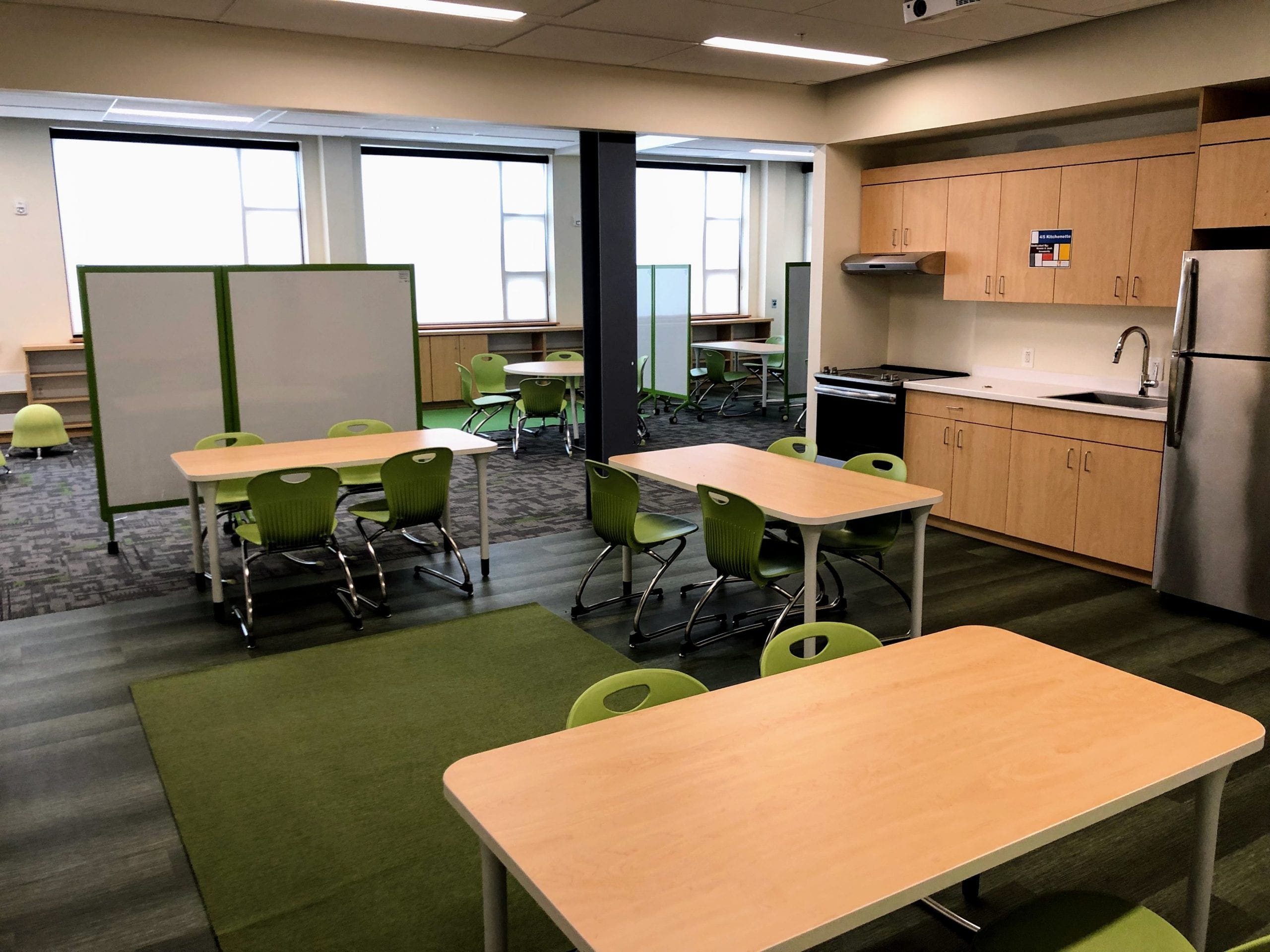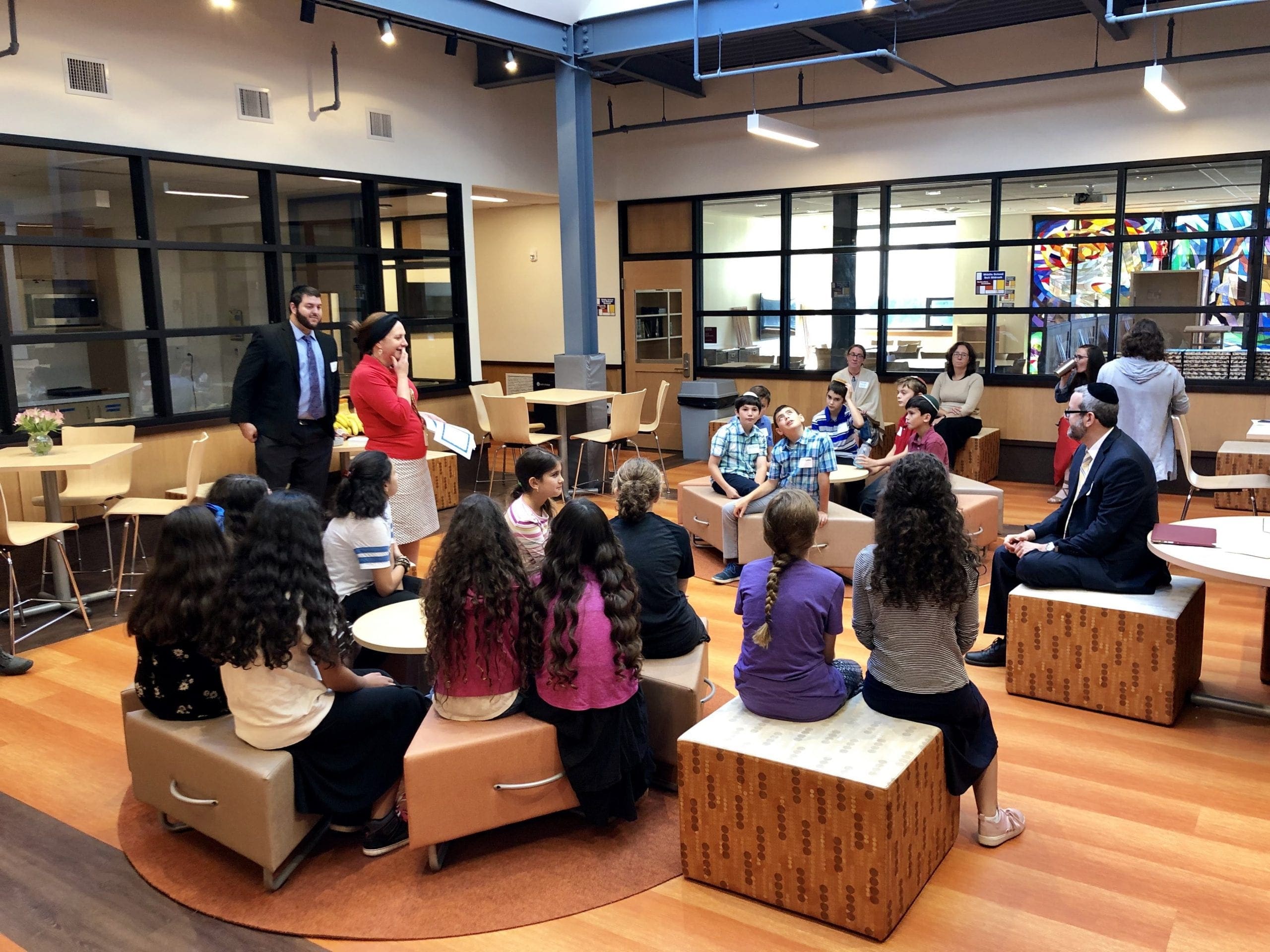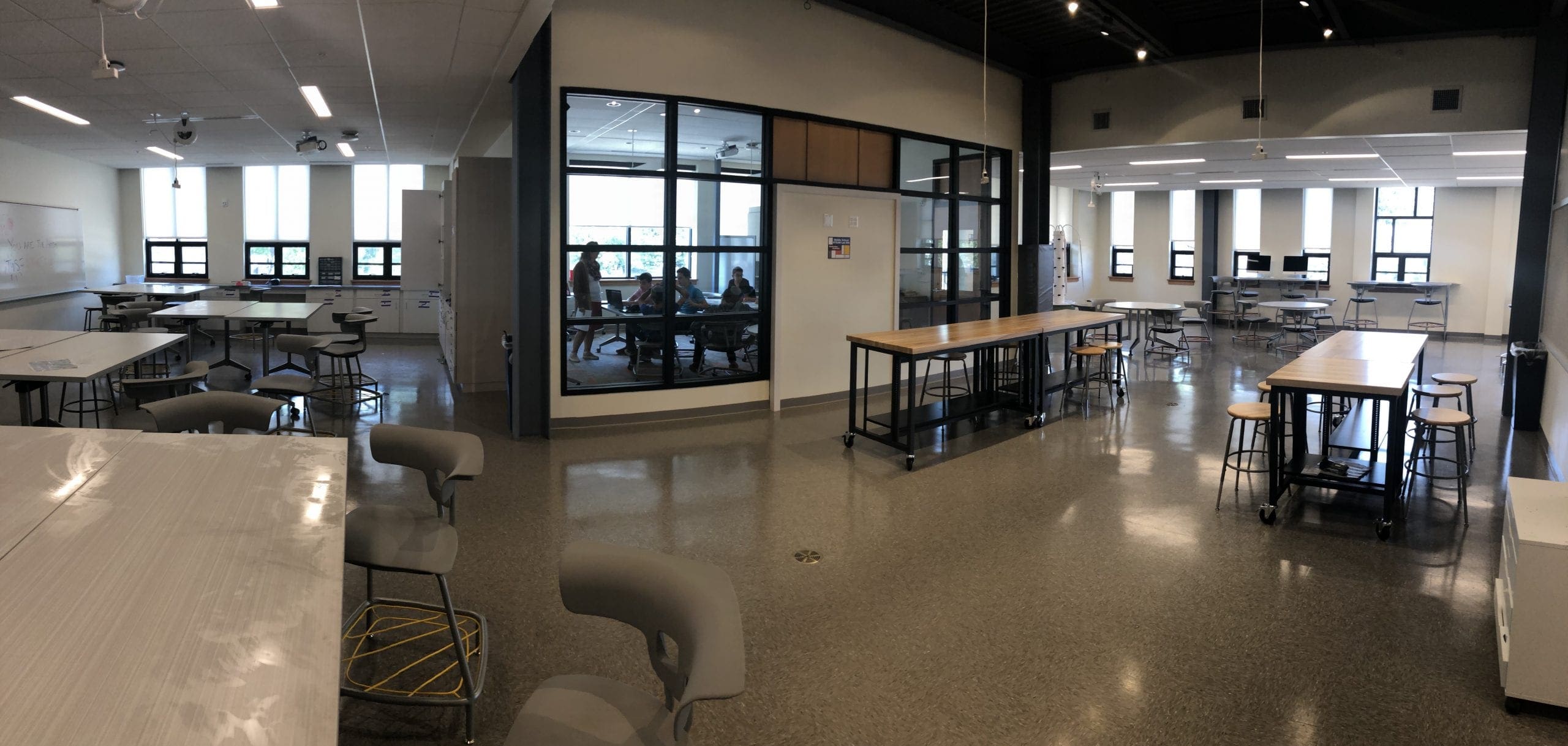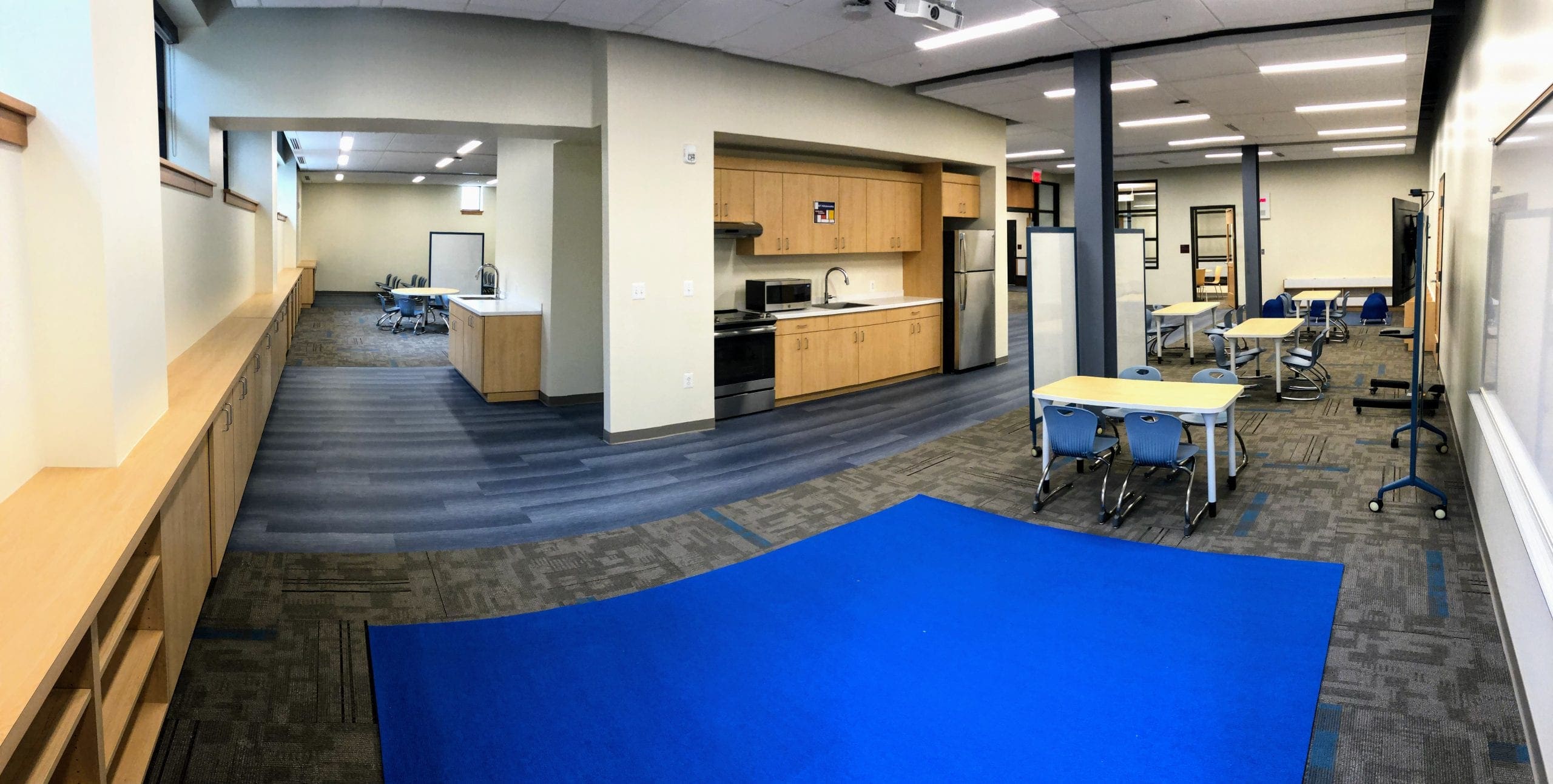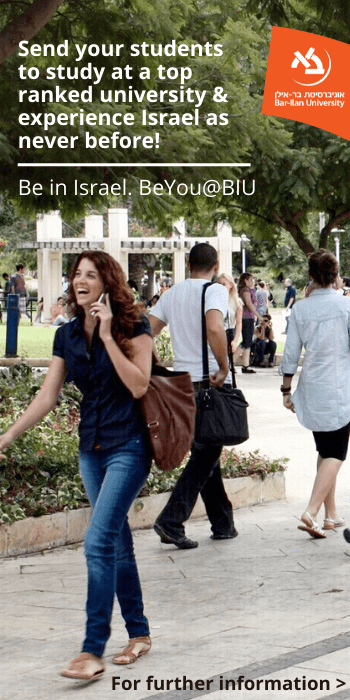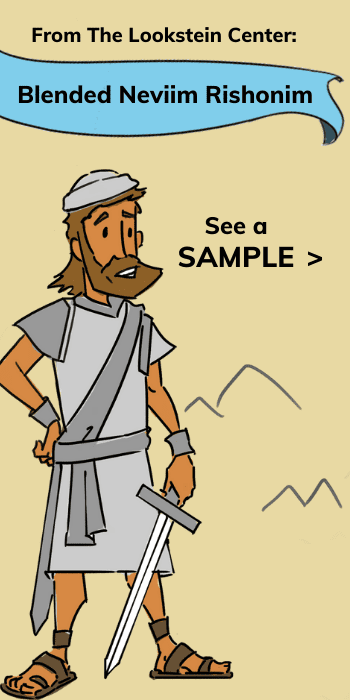In December 1991, Newsweek magazine ran a cover story entitled, “The 10 Best Schools in the World.” Featured prominently amongst them were the preschools in the previously unheralded Italian municipality of Reggio Emilia and directed by Loris Malaguzzi. It was Malaguzzi, one of the architects of what has become known today as the Reggio approach, who first referred to the environment in which children learn – the physical space in which they explore and grow – as the “Third Teacher.” He maintained that without ever speaking a word, the spaces we inhabit send us messages, convey values, and evoke emotions all of which enrich or inhibit our ability to learn.
The notion that physical space can be intentionally deployed to evoke thoughts, emotions, and even action, has roots in Jewish tradition, however, long before Malaguzzi. Indeed, it is rather surprising that the Torah, almost immediately after establishing the abolition of idolatry and the prohibition against worship of graven images as its founding principles, instructs the Jewish people to construct a Tabernacle – a physical space – within which to serve God. As Maimonides explains in his Guide to the Perplexed (3:47), the physical space of the Tabernacle and later the Temple in Jerusalem was intended not as an object of worship, but as an aid toward worship. Its purpose was “to create in the hearts of those who enter it certain feelings of awe and reverence.” A century later the author of Sefer HaHinukh (95:6) echoes that point when he writes that “We are obligated to say that the building of the House for God is… to prepare our hearts to His service… not from His need to sit in the house of people and to come under the shade of their beams.”
If a physical space can instill reverence and awe, if it can help focus one’s thoughts and actions on the instructions of God, then it can also inspire a sense of belonging and community, and turn one’s thoughts and actions toward the needs of our children. That is what we set out to create in building a space for Kohelet Yeshiva Lab and Middle Schools.
Yeshiva Lab School, located in the Philadelphia suburbs, began as a project of the Kohelet Foundation in the Spring of 2014. Its goal was to help push the world of Jewish education back to first principles by creating a Yeshiva Day School driven not by the question of “what do we know about how schools have always operated,” but by the question of “what do we know about how children learn?” Over the course of its pre-launch year, our educational design team (consisting of myself, the school’s Principal Mrs. Becky Troodler, and developmental and neuropsychologist Dr. Samuel Mandelman) set out to summarize the theoretical foundations of the science of learning in easily understandable Principles of Learning that could be shared with all of the school’s stakeholders and with the field as a whole. After several iterations the following ten emerged:
- Context creates connections.
- Self-awareness fuels progress.
- Mistakes are a necessary part of the process.
- Personalized learning maximizes student motivation and achievement.
- Real-world experiences promote real-world learning.
- Frequent recall forms long term memory.
- Intrinsic rewards lead to long term growth.
- Choice empowers.
- Voice inspires.
- Learning happens all the time and everywhere.
These principles served as a lens through which all educational decisions were made as the school started with a Kindergarten in the Fall of 2015. When, in the summer of 2016, a decision was made to merge Yeshiva Lab School with Kohelet Yeshiva High School and to open a Middle School division for the Fall of 2017, these principles were retained as the cornerstone from which the entire K-8 program would be built.
Through visits to student-centered schools across the country, scouring of literature, and internal brainstorming, a number of classroom practices emerged in support of these principles. Amongst them was the organization of the school into large, multiage classes taught by a team of teachers that included at least one General Studies specialist, one Judaic Studies specialist, one native Hebrew speaker (who speaks only Hebrew all day), and one Inclusion specialist, all of whom are present in the classroom, all day. Doing so maximizes the school’s ability to group children flexibly in order to personalize their academic, social-emotional, and spiritual growth.
With the creation of large (50 students) multiage classes, came the need to provide children with the sense of safety and belonging that large classes often lack. Openness to mistakes, the vulnerability necessary for self-awareness, and the fortitude that gives rise to one’s inner voice, are all vital to the learning process and all require high levels of emotional security. Thus our chevra system was born, in which every student is assigned to a micro-community within the classroom, consisting of no more than 12 students and led by one teacher (who generally stays with her students for two years), which meets for both a morning meeting and a closing meeting every day. It is there that our children feel most connected to a community, build their social and emotional skills, and receive encouragement from both peers and a caring adult to become the best versions of themselves.
These chevrot coupled with the fact that all instruction within the multiage classroom happens in small academically homogenous or intentionally heterogenous groups, created a particular challenge when it came to physical space. On the one hand, the classroom space had to be large enough to create the feeling of a single classroom community amongst all 50 children and the entire teaching team. On the other hand, the space and acoustics had to support multiple groups of children engaged in multiple different tasks all at the same time.
These challenges, along with our desire to bring our Learning Principles to life in every facet of our children’s educational experience, drove the design process as we set out to create a permanent physical home for our K-8 program. The result is a space that truly qualifies as Malaguzzi’s “Third Teacher.”
The first thing a visitor to our new K-8 building will notice is that it is built on three floors, each of which is intended to feel developmentally appropriate for the children who will inhabit it. The bottom floor houses our K/1 classroom and consists of a large “L” shaped classroom which wraps around an open rectangular space intended for more active learning and play. The “L” shape of the classroom is intended to foster both a feeling of connection between all groups of children and allow for different groups to be doing different things on different sides of the room without visibly or audibly distracting one another. The active learning area in the middle includes a small built-in stage for dramatic play as well as a door that leads to an outdoor amphitheater for extending the learning beyond the building’s four walls.
At the far end of the K/1 classroom is a fixture that has become somewhat of an icon at Kohelet Yeshiva Lab School: a free-standing set of blue monkey bars. The purpose of the monkey bars in the classroom is twofold. On the one hand, it is simply appropriate – and often necessary – for five and six year-olds to work on their gross-motor development even at times when they aren’t out on the playground. On a deeper level, however, the monkey bars serve as a metaphor for learning which we share with our faculty, parents, and visitors. Generally speaking, when five year-olds enter our classroom for the first time at the beginning of Kindergarten, they cannot make it all the way across the monkey bars. But they want to. So they climb up the rungs on the side, reach for that first bar, perhaps even swing to the second, and then they fall (the floor underneath the monkey bars is lined with thick gym mats to cushion their fall). While it takes some longer than others, they inevitably get back up and try again. Not because a teacher told them to, but because of an intrinsic drive to accomplish the task. And when they finally do, the feeling is euphoric. Ultimately, that confidence and satisfaction leads to even further growth: do it there and back, skip a rung, get across only by holding on the sides, etc., etc. That, we remind our teachers, is what all learning should look like: challenging enough that the learner stumbles and falls, desirable enough that the learner gets back up and tries again, and satisfying enough that the accomplishment of one learning task leads to another.
The school’s main floor is home to its 2/3 and 4/5 classrooms. They too are “L” shaped and form the perimeter of a Commons shared by both classrooms. The Commons obviates the need for hallways on this floor thereby ensuring that all space in the learning environment is learning space. The Commons is furnished with both “hard” and “soft” seating to facilitate both group and individual student work. All of the furniture is moveable, to allow the space to transform into a gathering space for all of the students in both classrooms, when appropriate. Dual-tiered wooden risers with carpeted tops on each side of the Commons, serve both as alternative seating / reclining spaces for students as well as mini “stages” for Reader’s Theater and other dramatic learning and play.
Like the K/1 classroom on the bottom floor, the 2/3 and 4/5 classrooms both feature full kitchens with an oven, a range, a sink, and a refrigerator. Not having to go somewhere special in order to bake and cook for a Shabbat oneg or hagim, to celebrate a special milestone or to (safely) apply heat and cold to science experiments, dramatically increases the frequency with which this type of experiential and real-world learning takes place. Another similarity to the K/1 classroom is that both the 2/3 and the 4/5 classrooms have direct access to the outdoors. Rather than leading to an amphitheater, their doors lead to an outdoor educational garden being built and sustained in partnership with the GrowTorah program.
In addition to creating angles in the classroom that allow different groups to be engaged in different activities within the same classroom with minimal distraction, the incorporation of SGIs into every floor of the new building was similarly intended to address this challenge. SGI stands for Small Group Instruction and refers to what look like small conference rooms or breakout rooms with a table or two, a few chairs, a whiteboard, and a projector. These rooms, three of which line the other sides of the main floor Commons, are spaces which teachers can use for small group instruction when the subject matter and/or students necessitate an even greater degree of quiet and focus.
Two other design elements feature prominently into the main floor of the Common Space. One is a wall of windows that look into the K-8 Principal’s office and, conversely, allow the Principal to be constantly connected to the learning happening throughout the floor. The second is also a glass wall and door leading to a small room that serves as a bridge between the second-third grade classroom and the fourth-fifth grade classroom. This is what we call our Teacher Headquarters. It is designed to balance the desire to ensure that all spaces in the classroom and Commons are learning spaces, with the needs of our faculty to have some space of their own. Locating it between the two classrooms fosters a sense of teamwork and collaboration between these two sets of teachers and windows on both sides allow teachers lines of sight into both classrooms and into the Commons at all times.
The third floor is home to our Middle School and shares many of the same design elements, with slight variations. Here too, the floor is arranged with large learning spaces surrounding a Commons, as well as three SGIs and a Teachers Headquarters. However, unlike the other floors, the large learning spaces in the Middle School are not age specific, but discipline specific. The centerpiece of the floor is a beautiful Beit Midrash that serves not only as a place for tefillah, but will be home to all Judaic Studies learning in the Middle School as well. On one side of the Beit Midrash is the Humanities Room which has a mix of soft and hard seating, with individual and collaborative workspaces. This allows for the teacher to engage one group of students in direct instruction, while other groups work on a team project, and still others lose themselves in the pages of a good book.
On the other side of the Beit Midrash is the Middle School STEAM Lab. Much as the name implies, this very large space consists of areas for science instruction (that includes hydroponic agriculture), an embedded SGI for quiet Math instruction, as well as pottery wheels, a kiln, sinks, easels, 3-D printers, and butcher block tables for Engineering and Art. Housing these disciplines within the same room encourages both teachers and students to fully explore and understand the interplay between these different subject areas.
Perhaps most importantly, the cumulative effect of entering a learning space through a Commons rich with warm colors and lined with inviting seating, where light streams in from the stained glass of the Beit Midrash and smells of freshly baked hallah emanate from the classroom kitchens, is to give children a sense that they are home. That is the enduring lesson taught by Kohelet Yeshiva Lab and Middle School’s Third Teacher.
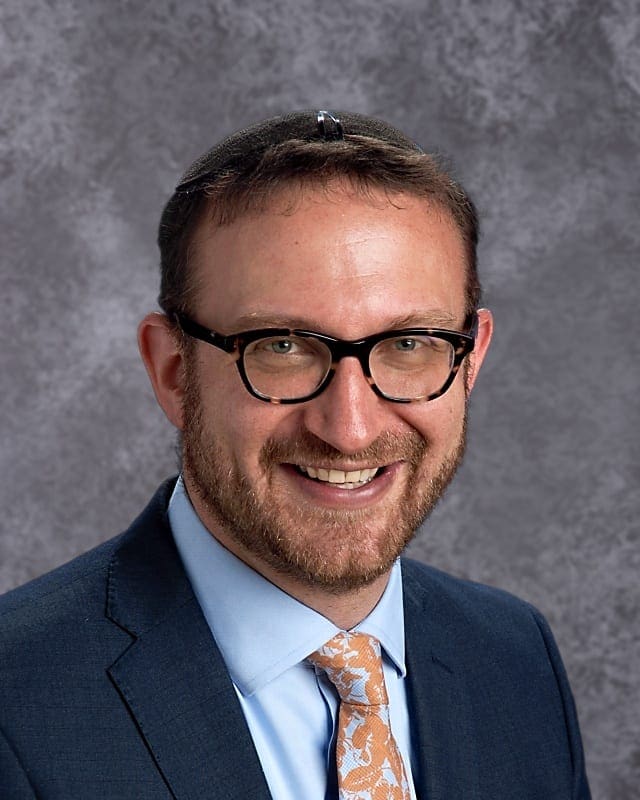

by Gil S. Perl
Gil S. Perl is the Head of School at Kohelet Yeshiva in Merion Station, Pennsylvania. As Chief Academic Officer of the Kohelet Foundation, Rabbi Dr. Perl led the team that designed and launched Kohelet Yeshiva Lab School.. He is the author of The Pillar of Volozhin: Rabbi Naftali Zvi Yehuda Berlin and the World of Nineteenth-Century Lithuanian Torah Scholarship (Academic Studies Press).



